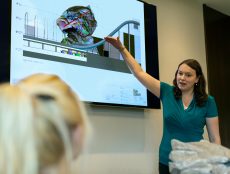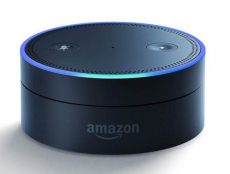
The home of the future is arriving. Your refrigerator, oven, air conditioner, and stereo not only can already respond to your commands but are now getting to know you. In the future, your refrigerator will increasingly be smart enough to know what you eat, how quickly, and when to alert your grocery service to order more products. Your oven will know when to turn down the temperature to prevent a meal from burning. Your air conditioner will know your core body temperature and adjust accordingly. Your stereo will know your musical taste and even your musical limitations and offer suggestions. Indeed, your entire home will know you as well or better than you know it, and this is precisely how smart homes will transform eLearning.
Smart Homes Will Transform Where and How we Learn
As the Internet of Things (IoT) expands, all aspects of our homes will become networked. At the same time, screens will become ubiquitous as they are increasingly built in to walls, items of furniture and appliances. In other words, we will increasingly interact with information via everyday objects and spaces rather than separate devices (e.g., tablets and phones). While it may sound odd, in the future, one might take a virtual cooking lesson from their stove. Indeed, as appliances, including kitchen appliances and utensils, become “smarter,” they will not only function as the tools we use to cook but also as our guides.

For example, consider the “smart pan,” which already is on the market. Have you ever wanted to learn how to grill the perfect steak? With a smart pan, you not only will know exactly when to flip your steak but also when to add additional ingredients. As more everyday objects, like “smart pans,” enter our kitchens and other areas of the home, learning will effectively move off the screen, tablet or smart phone and become “embedded” in specific contexts that are relevant to the learning experience.
While it seems likely that many “embedded” forms of learning will focus on leisure (e.g., how to grill the perfect steak), workplace training will also be impacted. Someone training to be a home nurse, for example, will soon have their training delivered and monitored via objects in the home. This means that in the future a common but complex procedure, such as moving a mobility impaired patient, for example, may be guided by a smart bed.
Smart Homes Will Transform eLearning with Geared-to-Learner Lessons
As smart homes transform training, the possibility for geared-to-learner lessons will also become commonplace. To return to the above example, rather than ask a home nurse to complete a series of predetermined modules, a home nurse’s eLearning will be determined by her specific needs. As she interacts with objects that are networked, her strengths and weaknesses will be constantly monitored. Something that may have gone unnoticed in the past (e.g., failing to move her patient’s position in bed on a regular basis) will be detected, and an additional module on patient body postures will be automatically added to her training program.
Likewise, it seems likely that in the future, anyone working in the trades will bring their training with them on the job and receive an increasingly geared-to-trainee course of training. A plumber in training, for example, may be able to more quickly work on his or her own with the support of smart tools that both guide his or her work on the job and with metrics gathered along the way, generate additional training modules in response to specific training needs.
While all of this may sound futuristic, it’s not. Networked appliances, household objects and tools are already beginning to flood the market. Although the integration of smart objects with eLearning will likely take at least another decade to become fully realized, there is little question that by 2025, training at home will not simply mean accessing course modules via mobile devices but also entail learning through our engagement with familiar spaces and objects. For anyone who wants to acquire new domestic skills (e.g., cooking or home repair skills) and for anyone who works in the home (e.g., as a home nurse, electrician, or plumber), the networking of homes and home objects will open up new ways to train and learn in real time and with increasingly meaningful and geared-to-trainee feedback and support.









No Comments